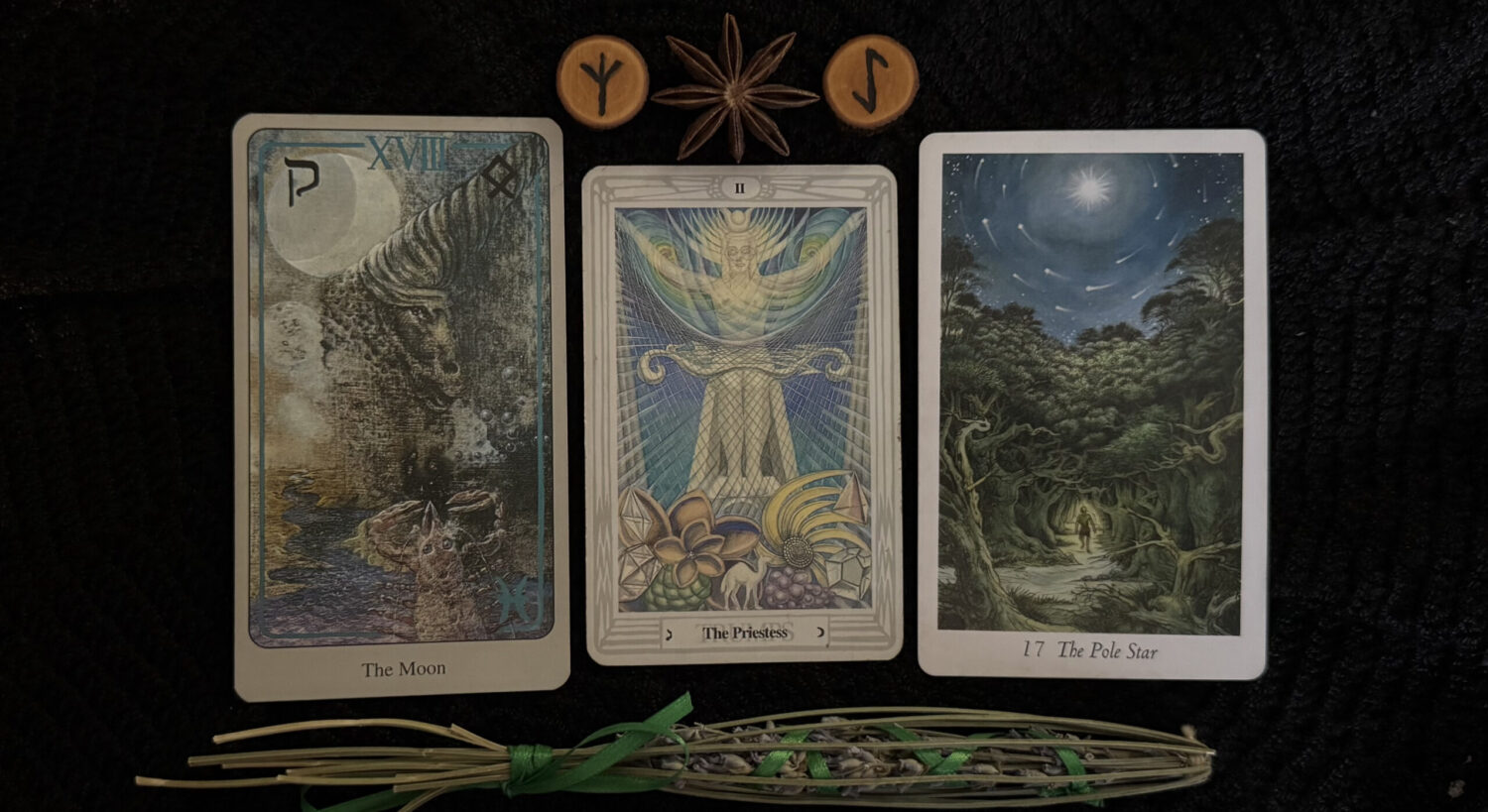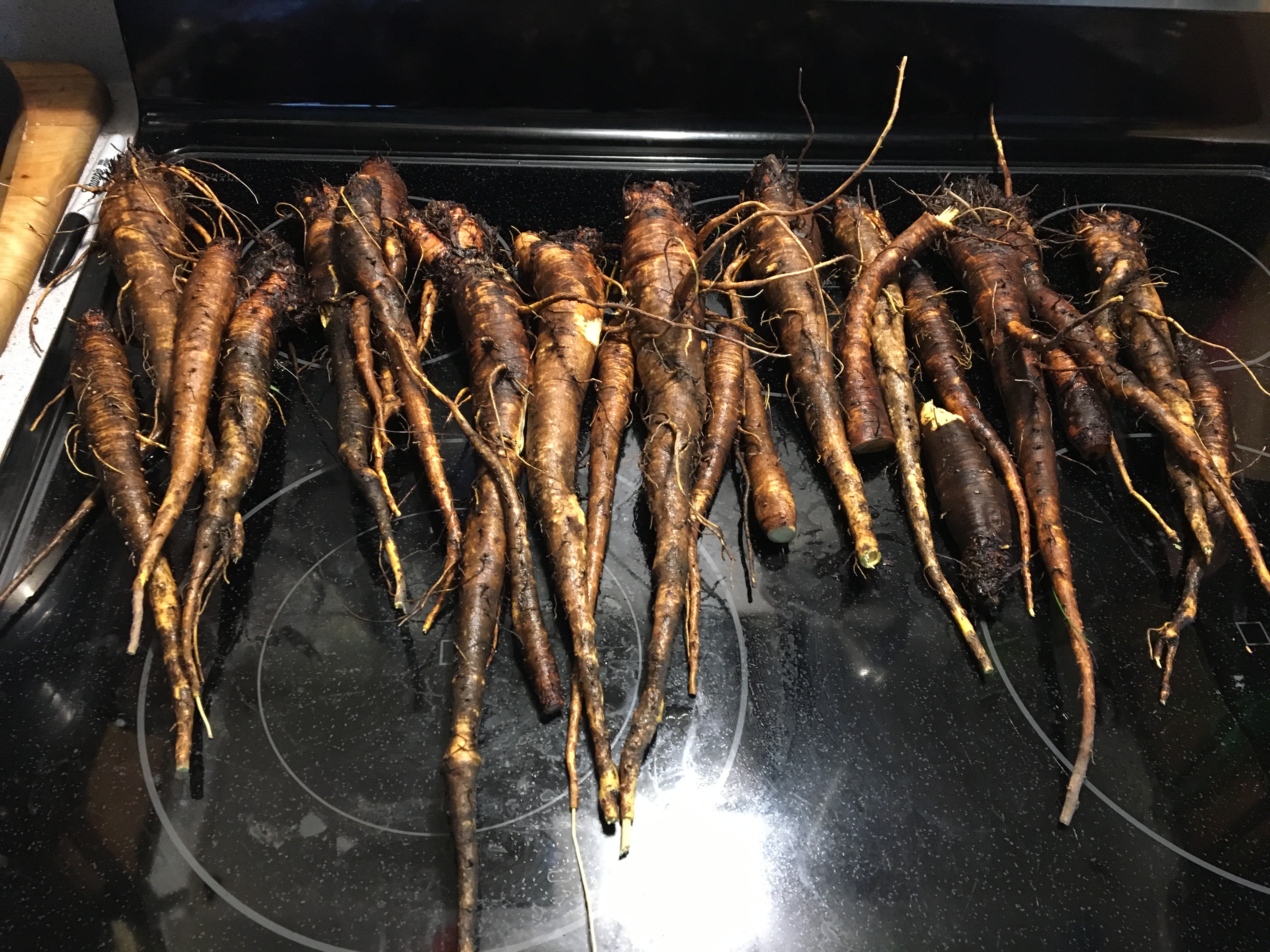Its red seeds, spiking up from the plant’s base are easily spotted by a watchful wildcrafting herbalist. Yellow dock root‘s inner yellow color corresponds with the liver and a cup of decoction (tea) or a few drops of tincture assists in flushing toxins and keeping nutrients moving well throughout the body. Roots are typically dug in the spring and fall, however, when my husband sees them in the pasture, I’m gifted with some roots irrespective of the time of year. Today, I got the motherload.
It’s not uncommon to find Rumex crispus growing nearly everywhere from pastures to dry ground. It also grows along the water’s edge, however, given the toxin potential from the water, I avoid gathering those and stick to gathering dock growing in my pasture or around my garden area. Both the seeds and leaves are edible with the seeds full of protein. However, I typically use the root in decoctions or tinctured.
[wordads]
As a liver alterative, yellow dock promotes bile production and acts as a liver tonic, may help control anemia, and its astringent properties make yellow dock useful as a mild laxative. Because of its alterative action, yellow dock is outstanding for skin disorders such as eczema or psoriasis whether used topically or taken as a tea or tinctured.
Matthew Wood writes in The Practice of Traditional Western Herbalism: Basic Doctrine, Energetics, and Classification:
Yellow dock root is sour, astringent, and faintly bitter, therefore suited to conditions where there is heat/irritation combined with relaxation and a little congestion. It contains small amounts of anthroquinones, which are purgative, but it is better to think of it as a heat-reducer rather than as a laxative.
~ Matthew Wood
And Susun Weed adds in the Wise Woman Herbal in the Childbearing Years:
The yellow roots of many Rumex species, prepared as a decoction, syrup, or tincture, provide an excellent, fully absorbable, non-constipating source of iron.
~ Susus Weed

When drying yellow dock roots, I both split and slice them as best I can. After brushing off as much dirt as possible, I wash the roots quickly. Any water essentially begins the extraction process, so I never soak roots. I trim off any bad areas and then begin splitting the roots down the middle and slicing them into smaller pieces from there. Smaller roots usually slice easily into small discs.
If using yellow dock root as a tea, simmer 1-2 teaspoons of the root (dried or fresh) covered to a cup of water for fifteen to twenty minutes. I typically make more than a cup at one time. After simmering, strain and drink. For an additional cleansing effect, before straining, remove the pan from heat and add a teaspoon of dandelion leaf to the decoction to steep for another ten minutes. Strain the liquid and enjoy a lovely cup of tea that will help keep the liver functioning properly.
[wordads]
Tincturing fresh root involves using grain alcohol. In fact, I use grain alcohol for all my fresh tinctures. It can be used in dry herb tinctures as well, but it should be diluted to an appropriate water/alcohol ratio. The herbalist, James Green, includes a helpful chart in his book, The Herbal Medicine-Maker’s Handbook: A Home Manual as does Dr. J. J. Pursell in The Herbal Apothecary.

For fresh plant tinctures, I use the folk or simpler’s method filling a pint canning jar about half-way with fresh yellow dock root and then covering it with grain alcohol up to the lip. Roots can expand, which these did, but it was still soupy enough that I didn’t need to add any additional alcohol. A two-week soak and the tincture is ready for use after first diluting it with water or glycerine. Grain alcohol is 195 proof which results in nearly 100% alcohol, far too potent to ingest without diluting. So, tinctures created with grain alcohol MUST BE DILUTED BEFORE USING.
[wordads]
All that’s necessary for preservative is 25-30% alcohol content, so when I transfer finished tincture from the main jar to a smaller dropper bottle for easy use, I use a 1/3 tincture to 2/3 water or glycerine ratio. 50/50 only gives me slightly less than 50% alcohol content and that’s still too much as far as I’m concerned, and I feel the 1/3 to 2/3 ratio is a better mix. And I’m always sure to clearly label the main tincture jar indicating that the tincture is NOT DILUTED. Labels are really important when creating herbal tinctures and I typically have all sorts of information on them to remind me of what I did.
A liniment can be made from yellow dock root as well using isopropyl alcohol. The advantage here is that isopropyl alcohol is available in high strength and is considerably less expensive than grain alcohol or even vodka. So, when I’m not planning to ingest it, I use isopropyl alcohol. The process is the same as tincturing and I have a liniment to use on insect bites, swelling, and skin eruptions.
[wordads]
And if a poultice is required, the fresh root can be chopped up and used, or powdered dried root works as well. In fact, I’ve used yellow dock liniment to moisten powdered yellow dock root to put on a mosquito bite that won’t stop itching. It worked well.
I’m a firm believer in ground-floor herbs such as yellow dock root to keep my body in balance. Liver imbalances are where many health problems begin. When the liver doesn’t function well, digestive and elimination problems, respiratory issues, skin disorders, and arthritic conditions may be the result. As someone in clinical remission from severe rheumatoid arthritis, using yellow dock root along with other liver alterative herbs helps maintain my remission. Nothing gets stuck and then toxic enough for inflammation to begin.
And with a husband who brings me an endless supply of roots to keep me healthy, I am truly blessed indeed!
Until next time…
Herbal Blessings to all!
[wordads]
Disclaimer
The information above is for educational purposes only and is not intended to diagnose any condition or prescribe any treatment. Please consult your medical/herbal professional for further advice regarding the use of herbs, particularly if you’re taking prescribed medications to avoid any unnecessary harmful interactions. Please seek treatment from a medical professional should symptoms occur that do not quickly resolve on their own. If you’re pregnant, please consult your medical/herbal professional before using yellow dock root.
References:
- Wood, Matthew. The Practice of Traditional Western Herbalism: Basic Doctrine, Energetics, and Classification. North Atlantic Books. Kindle Edition.
- Weed, Susun. Wise Woman Herbal for the Childbearing Year. Kindle Edition.
- Green. James. The Herbal Medicine-Maker’s Handbook: A Home Manual. Kindle Edition
- Pursell, J. J. The Herbal Apothecary. Timber Press. Portland. 2015.
- Erickson, Jan. Confessions of A Back Porch Herbalist. Kindle Edition.
If anyone intends to either quote something I've written, or intends to post any part of my work, including my videos, on any other site, please ask permission before doing so. Any reposting of my work without permission can be considered as copyright infringement, so please ask. And if I give permission, you MUST clearly reference my name as author and my website. No exceptions. The words an author writes are sacred. Unapproved use is not.
Thank you... Jan Erickson

